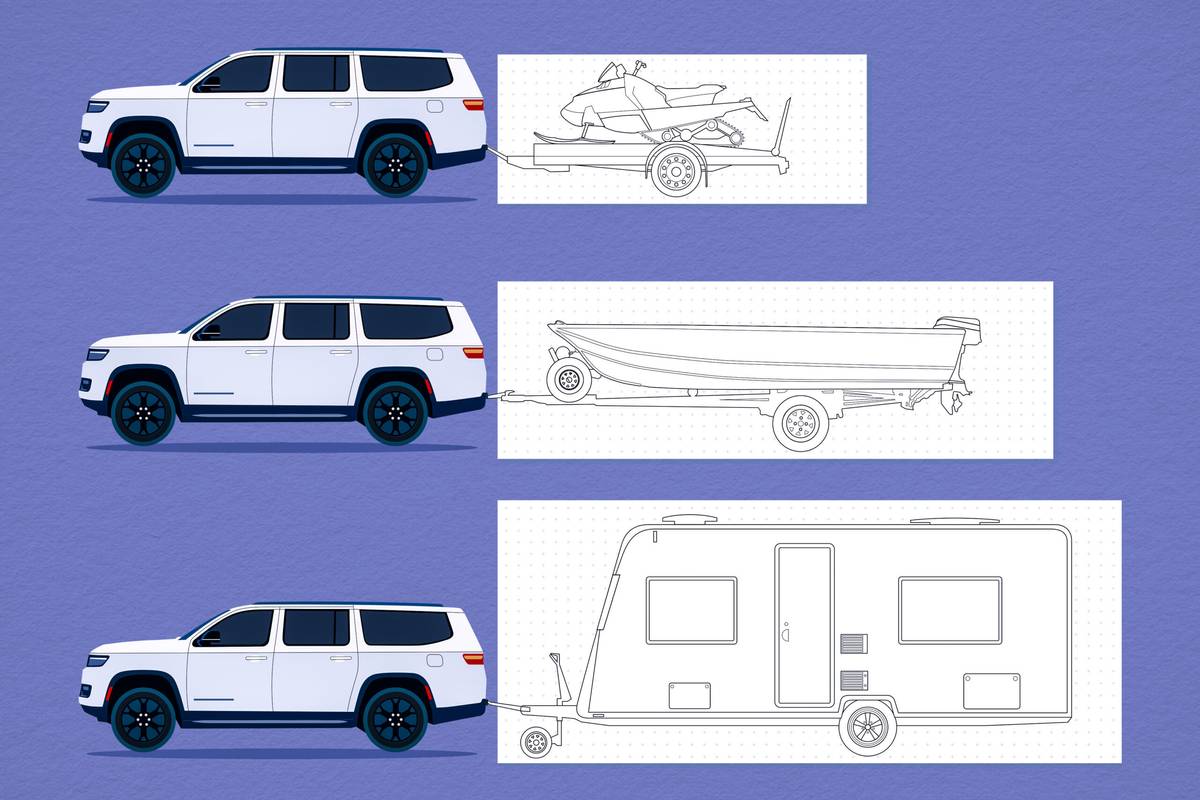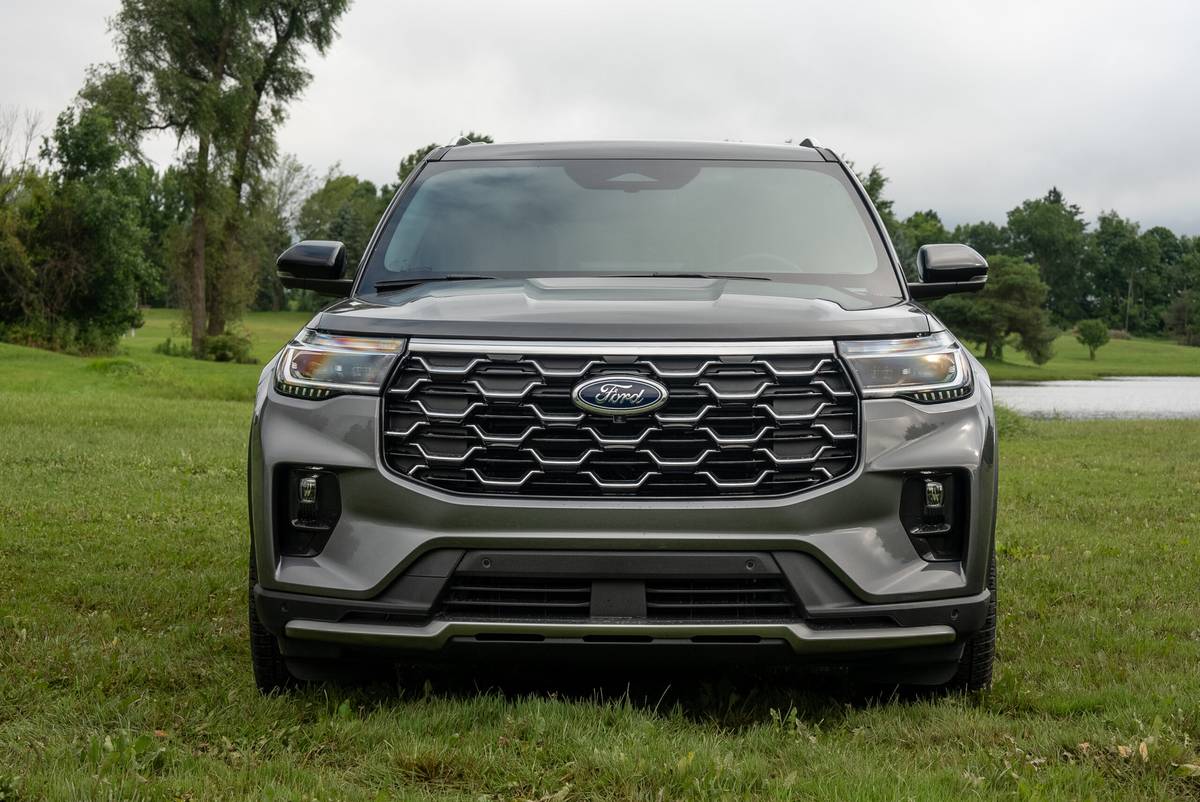Buy This, Not That: Why We Prefer the Latest Mainstream-Brand Big SUVs

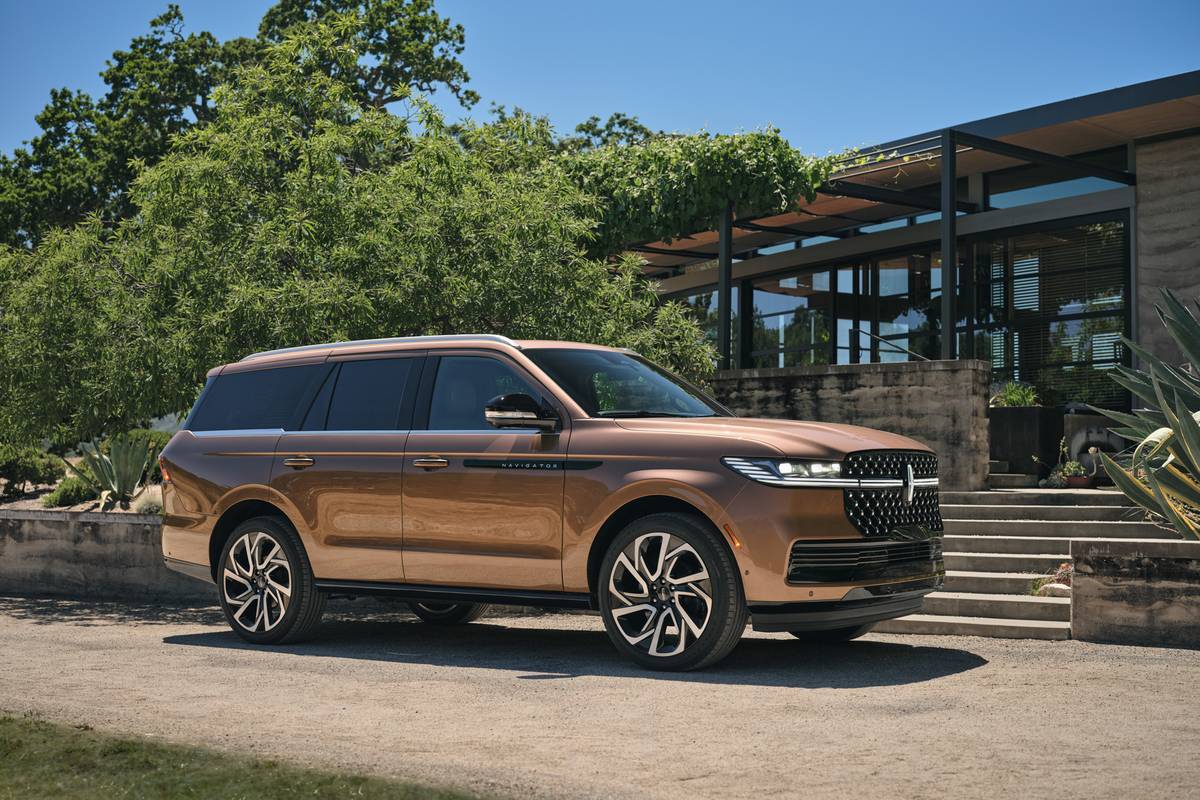
There’s a new crop of full-size SUVs that have recently started to appear in showrooms around the country, and we’ve noticed something about all of them: When it comes to their operation, actually driving and using these beasts, a lot of us prefer the mainstream-branded versions to the fancier, more luxurious, more expensive luxury-brand versions.
Each of the lesser-brand versions has a high-spec top trim that has a lot of luxury appointments, but they also almost all have one other feature that sways our preference: proper buttons instead of screen-based touch controls. You wouldn’t think that such a minor difference would make such a big opinion in our minds, but when we’re driving a lot of them back to back, it becomes clear to us that the lesser versions are easier to use and just as nice as the lux models, and they save some money, as well.
Related: These 10 SUVs Have the Highest Towing Capacity
Easier to Use, (Somewhat) Less Distracting
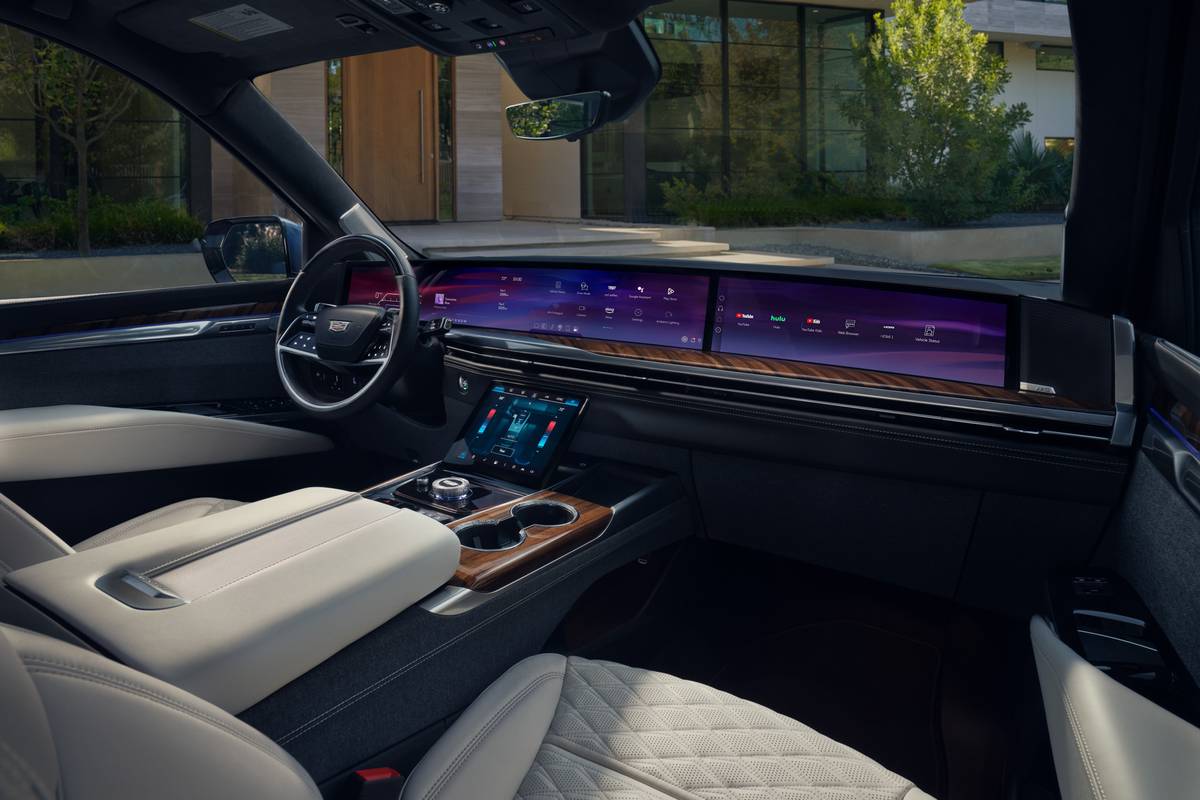
The biggest difference between the luxe and the regular models is in how their controls work. The GM SUVs are a great example of this: For 2025, the Cadillac Escalade has moved to an almost entirely touchscreen-controlled interior, with a huge panel stretching the width of the dashboard up top and a secondary panel below it for controlling things like climate functions and the automatic-closing doors. But the GMC Yukon’s interior doesn’t go this far, retaining a row of buttons for frequently used climate and audio features. The Chevrolet Tahoe and Suburban retain even more knobs and buttons, while still presenting large, easy-to-use screens.
This is also the big difference between the Infiniti QX80 and Nissan Armada. There are plenty of screens in both vehicles, but the Nissan retains buttons and knobs for a lot of functions, while the Infiniti is all touchscreen-controlled.
The new Ford Expedition and Lincoln Navigator go further. While they both now have touch-controlled systems for climate and other functions, Lincoln has gone the Tesla and Rivian route by putting air vent adjustments in the touchscreen, as well. So, if you’re driving down the highway and just want to move the vent blowing cold air on you to another position, you have to go through several menus on a touchscreen located down by your knees just to do this. And don’t get us started on the Ford’s touch-sensitive steering-wheel pads that require several pushes on a blank surface just to change the steering-wheel or side mirror positions. The level of distraction inherent in the new Ford and Lincoln models has grown significantly, and it’s not a positive development.
Why do we prefer dedicated buttons over touchscreen controls? The answer is simple: Buttons minimize distraction while driving. Touchscreen controls often require your attention as they can be buried behind several taps through different menus, they don’t always work on the first press, and they’re often located well out of the driver’s line of sight. Dedicated buttons, on the other hand, never change — they’re always in the same place, allowing for muscle memory and nonvisual, tactile feedback that lets you know if you’ve successfully adjusted, activated or pressed something.
Automakers that insist you pay unwavering attention to the operation of the vehicle while semi-autonomous cruise-control systems are operating are also requiring you to essentially operate a laptop computer with a touchpad while driving. That’s irony worthy of inclusion in an Alanis Morrisette song.
The Top Trims Are Just as Nice and Less Expensive
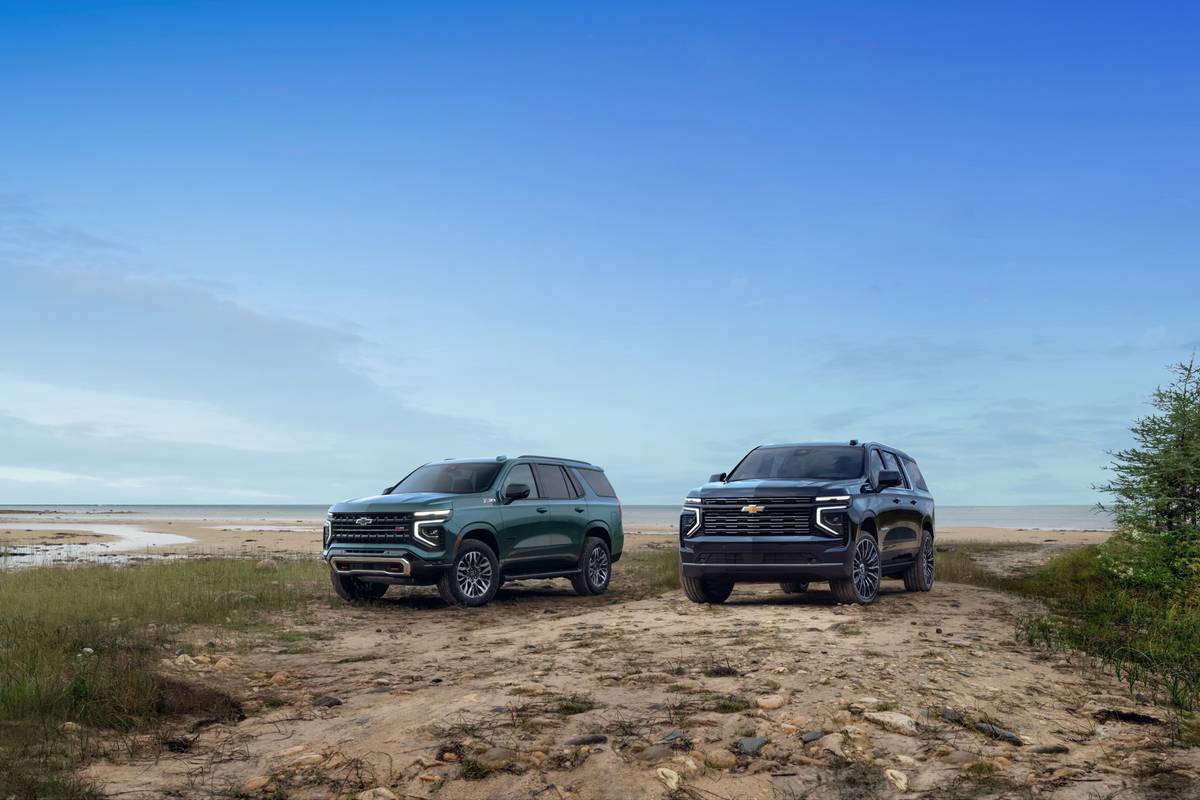
The prices of all full-size SUVs have gone through the roof since their most popular days of the late 1990s and early 2000s, but prices of the luxury versions have now become almost laughable. For instance, you can’t buy a new 2025 Navigator for less than $102,000 (all price discussions include destination fees), the latest Escalade starts at about 90 grand, and the QX80 starts at about $85,000.
However, the lesser-brand SUVs can be optioned close to these prices, as each of them offers a top trim that offers a similar level of materials fit and finish, appointments and build quality as the high-spec luxury offerings. This equalization is unusual and representative of the luxe-brand SUVs simply not being as nice as their prices should command while the lesser-brand SUVs have gotten considerably better.
For example: A Chevrolet Tahoe High Country exhibits the same level of interior material and assembly quality as the latest Escalade, and it shares the same 420-horsepower V-8 powertrain, Magnetic Ride Control suspension, four-wheel drive and 22-inch wheels. It also doesn’t feature a lot of the Cadillac’s plastic touch-panel trim. And that’s all for $6,400 less than a starter rear-wheel-drive Escalade.
The biggest thing you lack when opting for the lesser-brand SUVs over their luxury counterparts is a different dealer experience and, often, some additional features that aren’t available on the lesser SUVs — but you’re not likely to miss them.
More From Cars.com:
- Face-Lifted 2025 Chevrolet Tahoe Priced From $60,495, Suburban Starts at $63,495
- Is the 2025 Infiniti QX80 a Good 3-Row SUV? 5 Pros, 2 Cons
- 2025 Ford Expedition: Which Trim Level Should You Buy?
- Face-Lifted 2025 GMC Yukon Goes Upmarket in Content and Price, Starts at $68,895
- Find Your Next Car
What Should You Buy?
These days, the only real reason to buy a luxury-brand SUV over its mainstream-brand counterpart is perceived cachet. From powertrains to equipment to interior quality, the top trims of mass-market SUVs provide a less expensive alternative without sacrificing much of the experience of having the luxe-brand models. This is a result of mainstream brands getting nicer and luxury brands cutting costs, but it’s also design choices among automakers that are confusing technology for luxury, a trend started by German marques with questionable results. The lesser-brand SUVs are simply easier to use, less distracting and less packed with undesirable touch-based controls that don’t feel upscale in the slightest.
So what’s our recommendation? Save yourself some cash and angst: Go for the nicest version of the mainstream-brand models.
Related Video:
Cars.com’s Editorial department is your source for automotive news and reviews. In line with Cars.com’s long-standing ethics policy, editors and reviewers don’t accept gifts or free trips from automakers. The Editorial department is independent of Cars.com’s advertising, sales and sponsored content departments.

Detroit Bureau Chief Aaron Bragman has had over 25 years of experience in the auto industry as a journalist, analyst, purchasing agent and program manager. Bragman grew up around his father’s classic Triumph sports cars (which were all sold and gone when he turned 16, much to his frustration) and comes from a Detroit family where cars put food on tables as much as smiles on faces. Today, he’s a member of the Automotive Press Association and the Midwest Automotive Media Association. His pronouns are he/him, but his adjectives are fat/sassy.
Featured stories
